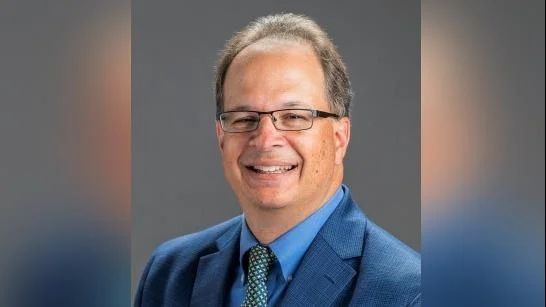Paul Arco Media Relations Coordinato | OSF HealthCare, Featured Stories, IL
Paul Arco Media Relations Coordinato | OSF HealthCare, Featured Stories, IL
Breast cancer is commonly associated with women, but men can also be affected by the disease, according to Heather Thompson, a breast health navigator at OSF HealthCare and a breast cancer survivor. Although male breast cancer is rare—accounting for about 1% of cases—it remains important to recognize symptoms and understand treatment options.
“There can be severe cases. A lot of times, men don’t notice things or worry about things like women might,” Thompson says. “The cancer is there longer and has a chance to metastasize [spread] and get into their lymph nodes. A lot of times, men will get gynecomastia. That can cause swelling in the breast tissue and a mass.” She explains that gynecomastia can make it harder for men to detect lumps, which may delay diagnosis and care.
Risk factors for male breast cancer include genetics, alcohol use, and smoking. While routine self-checks and mammograms are not generally recommended for men, Thompson advises individuals with a family history of breast cancer to consult their primary care provider about personalized plans that may involve genetic testing or blood work to monitor estrogen levels.
“Men really do not require regular screening or imaging for breast tissue. That is not in the American Cancer Society guidelines or any other guidelines,” Thompson says. “However, men should monitor their bodies for anything irregular. Then, get it addressed right away. Don’t wait. You might be in that 1%.” She emphasizes that untreated cancers can become fatal if they spread.
Treatment often involves mastectomy—the removal of breast tissue—which may be performed after diagnosis or as a preventive measure for those at high risk. “There’s not much tissue that a man has,” Thompson points out, noting that post-surgery changes are minimal aside from the absence of a nipple and a flat chest appearance. Lymph nodes are also tested during surgery to determine if the cancer has spread.
“After that, there’s special testing called oncotype,” she adds. This test assesses the likelihood of cancer returning: “If it’s a high score, those people sometimes have to have chemotherapy or radiation.”
Thompson acknowledges some men are reluctant to seek medical advice about breast health due to stigma or misconceptions: “I’m not a woman. I don’t need to worry about that.” At OSF Moeller Cancer Center in Alton, Illinois, she typically sees one to two male patients per month for imaging; most cases involve gynecomastia manageable by primary care providers, but some result in a cancer diagnosis.
“I tell them they’re not alone,” Thompson says. “Other men have gone through this. We have a roadmap to treat it.”
Further information on cancer care—including services at OSF Cancer Institute in Peoria—is available on the OSF HealthCare website.
Related stories can be found on the OSF Newsroom and OSF blog.



 Alerts Sign-up
Alerts Sign-up